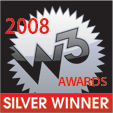NEW! Final Environmental Impact Statement File Released
A Burning Concern
When the Healthy Forests Restoration Act was signed into law in 2003, the Forest Service was given the green light to actively battle the causes of destructive wildfires nationwide. The objective of the Healthy Forests Restoration Act is to take a proactive approach to wildfire prevention through prescribed burns, density reduction, and deadfall underburning.
The Scott River and Salmon River Ranger Districts of the Klamath National Forest are on board with the Healthy Forests Restoration Act of 2003 and have initiated an environmental planning analysis for the area. Today, the ball is rolling on the proposed Eddy Gulch Late-Successional Reserve Fuels / Habitat Protection Project (“Eddy Gulch LSR Project”). This project area is located approximately three miles northeast of Cecilville, California.
The Forest Service and its contractor, RED, Inc. Communications, developed the proposed Eddy Gulch LSR project to protect wildlife habitat and reduce fire risks to communities and firefighters in the region. RED, Inc. analyzed the effects of a no-action alternative, the Proposed Action, and second action alternative. The draft environmental impact statement presents the results of the analyses.
This website is your source for the latest information pertaining to the Eddy Gulch LSR Project. Thank you for your interest in this project. We encourage you to submit comments and suggestions.
Project Development
"RED's interdisciplinary (ID) team, led by the core ID team (Ed Matthews, Barry Callenberger, Brooks Henderson, Steve Holl, Jim Crane, and Susan Hale), wanted to take a fresh approach to designing a fuels reduction project. The ID team reviewed the most recent scientific literature and relevant management policies and used their combined years (over 400!) of experience to design a project that met the project objectives, mimicked the historical fire regime in the Klamath Mountains, and presented a landscape-level approach. The result was approximately 26,000 acres of treatments that went far beyond the traditional approach of designing a linear fuelbreak on a ridge top. The local environmental community proclaimed that the Eddy Gulch Project signaled a new beginning to fuels management on the Klamath National Forest."


 Eddy Gulch LSR Project
Eddy Gulch LSR Project